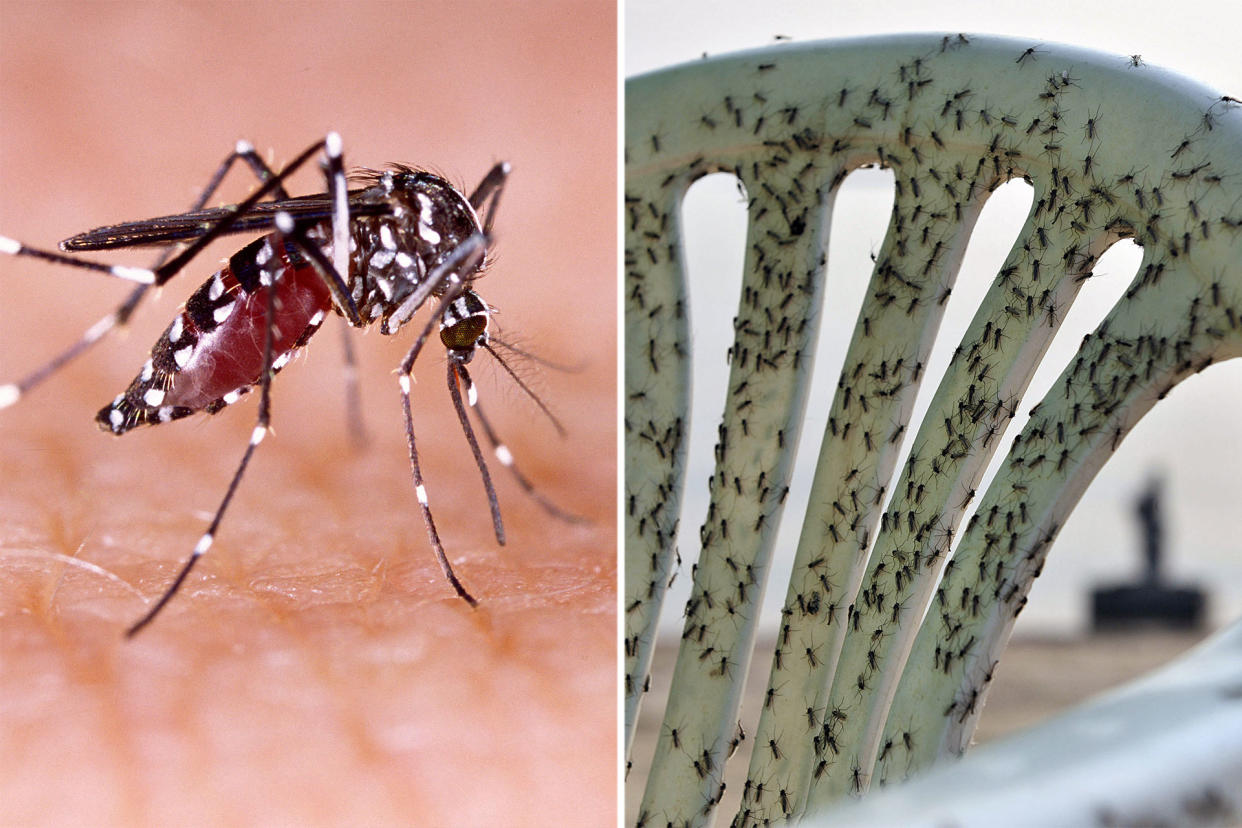Hotter weather partly to blame for spike in dengue cases, swarms of midges at Pandan Reservoir: Masagos

SINGAPORE — The unusually hot weather this year is one of the factors behind the recent spike in dengue cases as well as the swarms of midges around Pandan Reservoir.
This was revealed by Minister for the Environment and Water Resources Masagos Zulkifli in Parliament on Monday (2 September) in response to questions filed regarding both issues.
“The mean temperature of the first half of this year was 0.7 degrees higher than the same period last year.
“Warmer temperatures result in higher transmission of dengue, due to the accelerated development of the Aedes mosquito and shorter incubation period of the dengue virus,” he said.
Similarly, unusually high temperatures last month – the second warmest July on record since 1929 – hastened the growth process of midges, resulting in the situation at Pandan Reservoir, noted Masagos.
“With climate change we will experience more extreme weather, which will have a corresponding response from nature,” he observed.
3 factors behind dengue spike
The minister noted three factors as being responsible for the spike in dengue cases: the increase in mosquito population, relatively warmer weather and lower herd immunity among the local population.
According to the National Environment Agency’s (NEA) Gravitrap surveillance system, the Aedes aegypti mosquito population here has grown by almost three times since the last major dengue outbreak in 2013.
Masagos said that, in the first half of the year, the NEA had conducted over 442,000 inspections islandwide and uncovered about 8,200 mosquito breeding habitats. Of these, 60 per cent were found within residential premises.
Within known dengue clusters, the proportion of breeding habitats found within homes was even higher at 70 per cent, he added.
“This points to an urgent need for home and premises owners to step up their efforts to eradicate mosquito breeding habitats,” said Masagos.
He added that the NEA would continue with its inspections. The NEA has taken about 1,200 enforcement actions against households and premises owners for mosquito breeding in the first half of this year.
Additionally, the NEA will be deploying a further 14,000 Gravitraps – which trap female mosquitoes that are looking to lay their eggs in water bodies – to new HDB blocks and landed estates.
“This will augment the current network of 50,000 Gravitraps and enhance our surveillance capabilities,” said Masagos, adding that this would allow NEA to focus its resources on areas with high mosquito populations.
When it comes to dengue reduction, Singapore has been a victim of its own success. While the proportion of adults here who have had dengue fell from 59 per cent in 2004 to 51 per cent in 2009 and 41 per cent in 2017, this has resulted in lower herd immunity among the local population.
As such, “a large proportion of Singapore’s resident population remains susceptible to dengue”, said Masagos.
Midge emergences happen ‘from time to time’
Separately, the minister noted that midge emergences occur “from time to time” at several reservoirs, including Pandan, Bedok, Punggol, Serangoon, Poyan, Tengeh and Marina reservoirs, as well as Punggol Waterway.
“Midges neither bite nor spread diseases. But they pose a nuisance to the public when they swarm in large numbers. And being weak flyers get blown by wind into the surrounding residential areas,” noted Masagos.
He added that national water agency PUB monitors the reservoirs for potential midge emergences and took swift action when it noticed a rise in midge larvae in mid-June. This included increasing the frequency and dosage of liquid larvicide applied within the reservoir to kill midge larvae and increasing the frequency of fogging around the reservoir dyke to kill adult midges.
PUB has also installed bright spotlights at the Pandan Reservoir pumping station, turning them on at night to attract the midges as they emerge from the reservoir. Doing so allows PUB to keep the midges within the reservoir area and for more effective targeted measures to be undertaken, said Masagos.
The minister observed that the current dominant species of midges here is a “rare one” that has not been studied in great detail, and exhibits behaviour that is different from other midges.
“For example, they hide in drains and culverts in the day, and swarm above the drains in the evening,” said Masagos, noting that the PUB has had to adapt its actions to tackle such behaviour.
“PUB has explored the use of free-moving oily paper within drains to increase the capture rates of adult midges, which has worked very well according to feedback from residents,” he said.
PUB has also extended the existing 0.5km of netting at the Pandan Reservoir dyke to an additional 1km. This netting traps adult midges and reduces the number of them being blown towards the residential estate.
Masagos said that PUB had also been working with the West Coast Town Council to engage with residents through multiple channels, including dialogue sessions and flyers.
Affected residents have also been advised to turn off their lights when not in use, so as to not attract midges, and to install screens at their windows or draw their curtains when necessary.
Other Singapore stories
82-year-old man charged with murdering 79-year-old woman in Toa Payoh
Woman, 51, found dead at koi pond in Bukit Batok condominium



